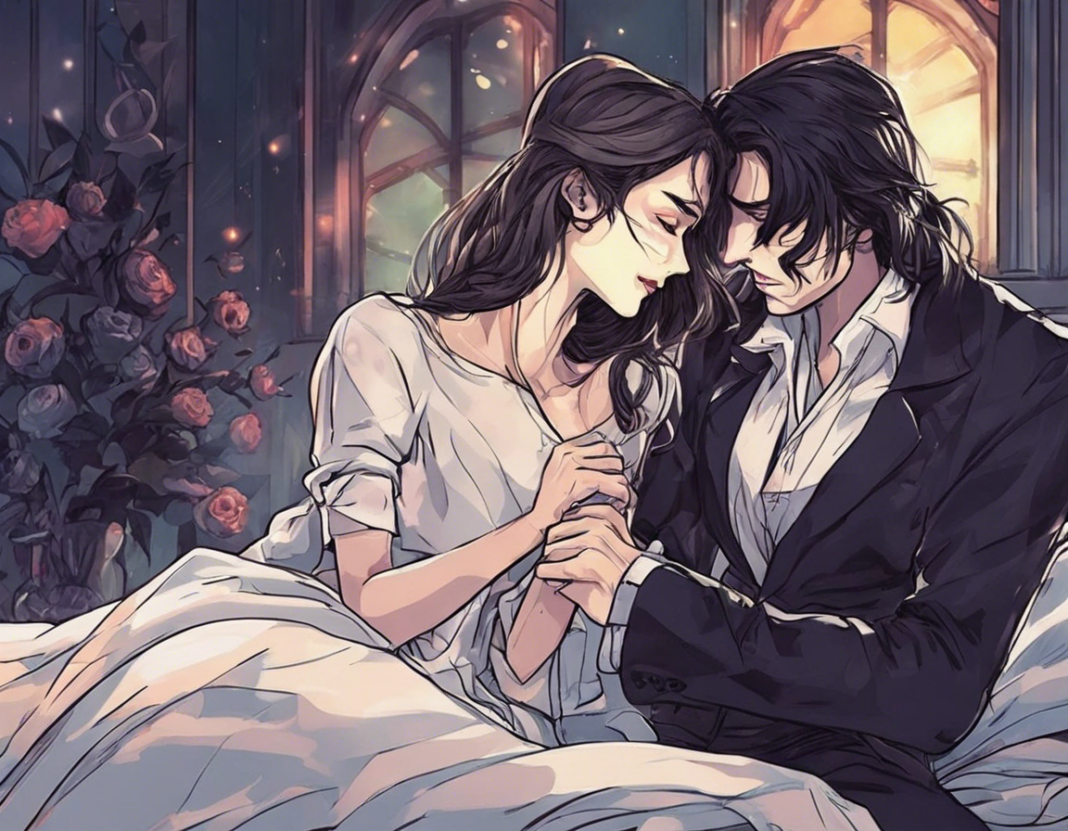Introduction
From classic tales to modern blockbusters, the conflict between the heroine and the villain has been a central theme in storytelling. However, what happens when the villain’s role transcends the boundaries of their fictional world and infiltrates their dreams? This article delves into the psyche of villains who find themselves fixated on the heroine, exploring the intricate dynamics of their nocturnal obsessions.
Understanding the Villain-Heroine Dynamic
The fascination a villain holds for the heroine is often rooted in complex emotions and motivations. While the traditional narrative pits them against each other as adversaries, the villain’s obsession with the heroine can stem from a deeper source. It may be driven by desire, envy, admiration, or even a twisted form of love.
In many stories, the villain is drawn to the heroine’s strength, resilience, and unwavering moral compass. The contrast between her goodness and his malevolence creates a powerful magnetism that defies conventional norms. The villain sees in the heroine qualities that he lacks – virtues that both attract and repel him in equal measure.
Exploring the Villain’s Dreams
When night falls and the world fades into shadows, the villain’s subconscious mind comes alive with vivid and often haunting dreams. In these dreams, the heroine takes on a surreal and mesmerizing quality, becoming the focal point of the villain’s deepest desires and fears.
One common theme that pervades the villain’s dreams is the desire for control. In his waking hours, the villain may be consumed by the need to dominate and subjugate the heroine. However, in his dreams, this desire takes on a more surreal and distorted form. The heroine may become an ethereal figure, always just out of reach, fueling the villain’s longing and frustration.
Embracing the Darkness
The villain’s obsession with the heroine in his dreams allows for a deeper exploration of his character and motivations. It peels back the layers of his facade, revealing vulnerabilities and insecurities that he strives to keep hidden from the world.
In his dreams, the villain may confront his own inner demons – the doubts, regrets, and traumas that have shaped him into the antagonist he has become. The heroine serves as a mirror, reflecting back to him his own darkness and challenging him to confront the parts of himself that he has long sought to bury.
The Thin Line Between Love and Hate
At the heart of the villain’s obsession with the heroine lies a delicate balance between love and hate. His feelings towards her are a complex interplay of emotions, ranging from possessiveness and jealousy to admiration and adoration.
In his dreams, the villain may find himself torn between wanting to destroy the heroine and longing to protect her. This inner conflict mirrors the external battle he wages against her in the waking world, blurring the lines between enemy and savior, tormentor and guardian.
The Heroine’s Influence
Despite the villain’s best efforts to resist her allure, the heroine holds a power over him that transcends his darkest impulses. Her unwavering compassion and capacity for forgiveness challenge the villain to question his own beliefs and motivations.
In his dreams, the villain may find himself drawn to the heroine’s light, seeking solace in her presence even as he struggles to extinguish it in the real world. Her innate goodness acts as a counterbalance to his malevolence, offering him a glimpse of redemption and the possibility of transformation.
FAQs
1. Why are villains often fixated on heroines in storytelling?
Villains are drawn to heroines due to the contrast in their characters, with the heroine embodying qualities that the villain lacks or desires. This dynamic creates a compelling relationship that drives the narrative forward.
2. What motivates villains to dream about heroines?
Villains may dream about heroines as a reflection of their subconscious desires, fears, and insecurities. The heroine often symbolizes a source of power, inspiration, or conflict for the villain.
3. How do dreams impact the portrayal of villains in stories?
Dreams provide insight into the inner world of villains, humanizing them and revealing the complexities of their characters. Dreams allow for a deeper exploration of the motivations and conflicts that drive the villain’s actions.
4. What role does the heroine play in influencing the villain’s behavior?
The heroine’s influence on the villain can range from triggering his transformation and redemption to fueling his descent into darkness. Her actions and choices often challenge the villain’s beliefs and motivations, shaping the course of their interactions.
5. Can villains and heroines ever find common ground in storytelling?
While villains and heroines are typically portrayed as adversaries, storytelling may explore the possibility of them finding common ground or understanding. This can lead to nuanced character development and unexpected plot twists.
In conclusion, the villain’s fixation on the heroine in his dreams elevates the traditional hero-villain dynamic to a realm of profound introspection and emotional depth. Through their nocturnal obsessions, villains confront their own shadows and grapple with the complexities of love, hate, and redemption. The dreamscape becomes a battleground where inner demons are laid bare, and the heroine’s light pierces through the darkness, challenging the villain to confront his true identity.
